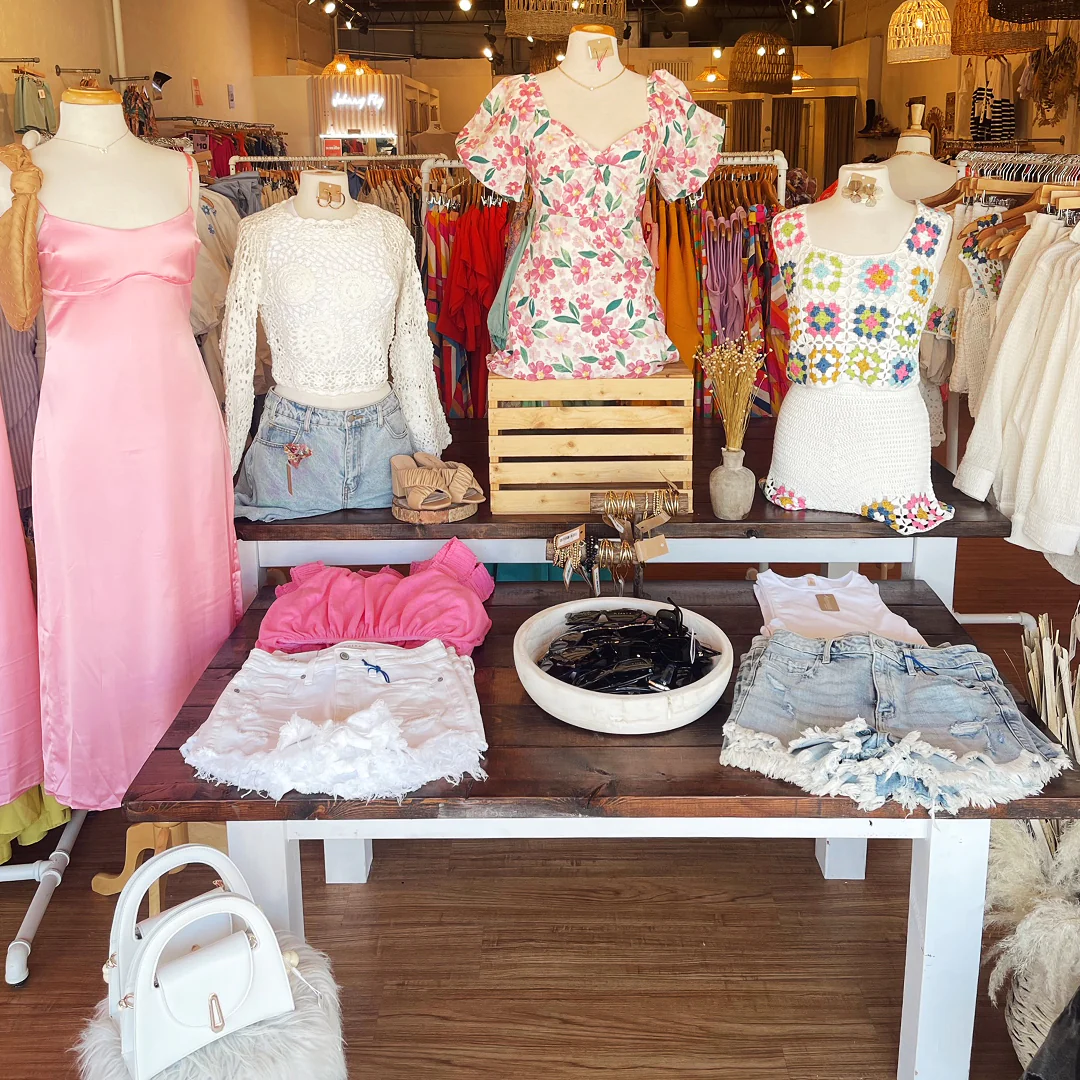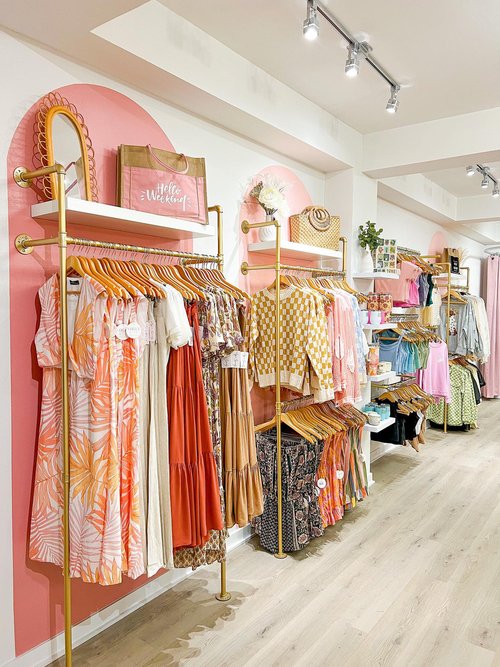Check Out the most recent Trends in Boutique Fashion for every single Period
Check Out the most recent Trends in Boutique Fashion for every single Period
Blog Article
Checking Out the Development and Effect of Clothing on Modern Fashion Trends
The development of clothing has dramatically affected contemporary style trends, combining historical precedents with sophisticated innovations. Legendary figures like Coco Chanel and Yves Saint Laurent revolutionized the apparel industry by introducing concepts that prioritize comfort and access, which remain to resonate today. On the other hand, technical strides in locations such as 3D printing and wise fabrics are redefining style possibilities and consumer experiences. Additionally, the growing focus on inclusivity and sustainability is improving industry requirements. As we consider these multifaceted influences, one should doubt exactly how these elements collectively redefine style's duty in showing and shaping contemporary culture.
Historic Fashion Influencers
In the tapestry of style background, particular figures have actually left an indelible mark, shaping the trends and styles that specify entire ages. Coco Chanel, an advanced designer, redefined women's fashion by presenting comfy, elegant apparel that left from limiting bodices.
Elsa Schiaparelli is one more essential figure, renowned for her progressive designs that incorporated surrealist art, working together with Salvador Dalí to create whimsical pieces that challenged traditional aesthetics. Her ingenious usage of color and bold patterns reverberates in modern style. Yves Saint Laurent, meanwhile, equalized high style with prêt-à-porter collections, bringing runway styles to the masses and setting a criterion for modern-day ready-to-wear lines.
These visionaries, to name a few, not just changed fashion in their times however also set sustaining fads that reverberate in today's fashion business, providing a foundation whereupon modern-day designers proceed to innovate and construct. Their heritages highlight the relevance of imagination and bold in style's ever-evolving story.
Technological Innovations in Style
Amidst the vibrant landscape of the apparel industry, technological developments stand at the center of advancement, reshaping just how developers develop and consumers involve with fashion. The combination of 3D printing has revolutionized layout procedures, enabling designers to trying out complex frameworks and sustainable materials that were formerly impossible. This modern technology assists in fast prototyping, minimizing waste and expediting manufacturing times.

Smart fabrics, installing innovation right into materials, are likewise changing the industry. Technologies like temperature-regulating and self-cleaning materials provide enhanced performance and convenience. Wearable modern technology, including functions like physical fitness tracking and interaction, includes a brand-new dimension to style, combining appearances with usefulness.
Social Shifts and Style
As technological developments remain to reshape the fashion business, social changes are equally influential, redefining design and customer choices. In the last few years, the rise of social networks platforms has actually accelerated the circulation of global style fads, permitting diverse social impacts to assemble and exist side-by-side. This digital interconnectivity has actually helped with the quick exchange of concepts, causing a more additional hints eclectic and inclusive analysis of design that reflects the multifaceted nature of modern society.
Cultural understanding and admiration have actually prompted developers to attract ideas from a wider spectrum of historic and ethnic contexts, integrating standard themes with his comment is here contemporary visual appeals. This fusion has caused style that resonates with a wider target market, advertising a sense of identity and belonging throughout various demographics. Furthermore, the enhancing demand for personalization has driven brands to supply adjustable options, allowing customers to share uniqueness while reflecting their social heritage.
In addition, changing social worths have impacted fashion, with inclusivity and diversity becoming central motifs. The industry has started to embrace versions and influencers of various body kinds, ethnic cultures, and gender identities, difficult traditional beauty requirements. This makeover underscores the power of cultural shifts fit the future of fashion, as design ends up being a more genuine expression of cumulative and individual identity.
Sustainability and Modern Layout
While the style sector remains to advance, the necessary for sustainability has actually become significantly immediate, affecting modern-day design methods. This shift intends to address environmental concerns and ethical factors to consider, leading to a reevaluation of traditional manufacturing techniques. Developers are now incorporating lasting products, such as natural cotton, recycled polyester, and naturally degradable materials, into their collections, minimizing the environmental footprint of style. The surge of slow style, which emphasizes top quality over amount, motivates customers to invest in timeless pieces instead than short-term patterns.
Additionally, modern-day design is characterized by its innovation in decreasing waste and advertising circularity. This strategy not only minimizes environmental influence yet additionally improves the social obligation of fashion houses.

Future Trends in Fashion

Sustainability will certainly remain to be a driving pressure in shaping future style trends. The market is progressively taking on green materials and ethical manufacturing methods, replying to a growing customer need for accountable methods. Developments such as bio-fabricated products and closed-loop recycling systems are readied to redefine exactly how clothing is generated and consumed, reducing ecological influence while maintaining design and quality.
Social changes, including the rise of inclusivity and variety, will certainly additionally play a critical function. As culture becomes much more conscious of social issues, fashion is expected to come to be a system for expression and change. Developers will likely concentrate on developing collections that show a more comprehensive variety of identities and experiences, promoting representation and availability.
Conclusion
The advancement of apparel substantially influences contemporary style fads, where historical impacts combine with contemporary designs. This recurring development highlights style's function as a mirror to societal values and technological advancement, recommending a future rich with advancement and inclusivity.
The advancement of clothing has actually substantially affected contemporary style fads, combining historical criteria with advanced technologies.In the middle of the dynamic landscape of the fashion industry, technical improvements stand at the leading edge of advancement, reshaping how designers produce and consumers involve with fashion.While the style sector continues to develop, the imperative for sustainability has ended up being increasingly immediate, affecting contemporary style methods. As sustainability ends up being embedded in modern design, it paves the method for an extra responsible and conscious fashion sector.
The advancement of garments significantly affects contemporary style fads, where historical influences merge with modern layouts.
Report this page